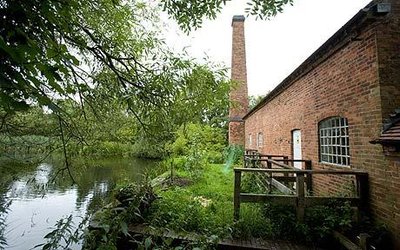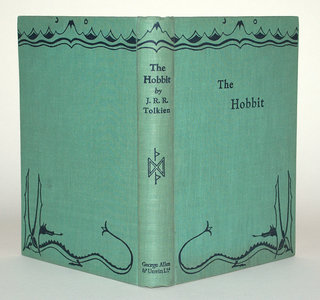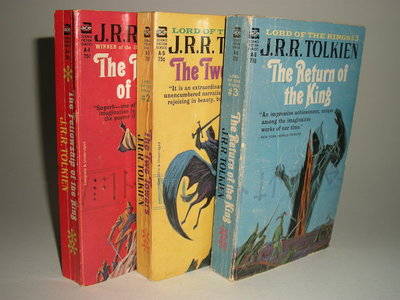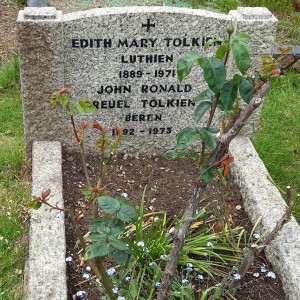Today marks the birth of John Ronald Reuel Tolkien better known as J.R.R Tolkien, author of The Silmarillion, The Hobbit and The Lord of the Rings Trilogy.
Considering he grew up very near to me, with most of Middle Earth being based upon geographical points in and around Birmingham England, I realised I know very little about him, his life and (forgive my blasphemy) his books.
So I am about to undertake my very own journey, to find out what I can about the man, the myth and Middle Earth, come with me for the ride?
Tolkien’s family although (paternally) 18c immigrants from Saxony considered themselves to be a truly English and more thoroughly West Midland family group. However Tolkien himself was born in Bloemfontein South Africa on January 3rd 1892 after his family had emigrated there in order for his father to pursue better prospects and offer the family a better life. Tolkien himself remembers very little of SA other than an incident with a large hairy spider (which he later claimed inspired some of his writings) and in fact he and his family returned to the Midlands after only four years in 1896 after the sudden death of his father.

Here, in the strangely ordinary juxtaposition of industrial Birmingham and rural idylls of Sarehole Mill and Worcestershire Tolkien’s family made their home, living in Kings Heath where the beginnings of Middle Earth were birthed.
His house backed on to the railway tracks and the coal trucks that would pass by having come from or returning to such places as “Nantyglo”,” Penrhiwceiber” and “Senghenydd” fascinated him and fired up a lifelong love affair with linguistics he had a natural ability and would often make up his own languages which he and other boyhood friends would incorporate into their club known as“T. C. B. S.” (Tea Club, Barrovian Society, named after their meeting place at the Barrow Stores) .
The family moved briefly to Edgbaston where they lived until Tolkien’s mother was diagnosed with diabetes, a then fatal (pre insulin) disease; she died in November of 1904 leaving the boys orphaned and destitute. After a brief period of time in the care of a cruel aunt, they were boarded by a Mrs Faulkner whilst their spiritual and material needs were taken care of by Father Francis. Here Tolkien would meet Edith Bratt, a woman four years his senior and a budding relationship that was frowned upon by both Mrs Faulkner and Father Francis and eventually he succumbed to the pressures of his carers and broke it off.
Tolkien’s language skills continued to flourish and by his late teens he could speak Latin, Greek, Gothic and Finnish as well as having made up a number of his own languages throughout his school years.
Whilst at Exeter College, Oxford where he was studying Classics and in the course of his Old English studies he discovered a poem called the Crist of Cynewulf – he was amazed especially by the cryptic couplet:
Eálá Earendel engla beorhtast
Ofer middangeard monnum sended
Which translates as:
Hail Earendel brightest of angels,
over Middle Earth sent to men.
Is this then, where Middle Earth originated?
It was also during this period that Tolkien and Edith became reacquainted and eventually they married, setting up home in Oxford.
When WWI broke out, Tolkien did not join up immediately but continued his studies until 1916 when he was finally sent to the front just in time for the Battle of the Somme. After four months in and out of the trenches, he succumbed to “trench fever”, a form of typhus-like infection common in the insanitary conditions, and in early November was sent back to England, where he spent the next month in hospital in Birmingham.
Shaped by his experiences at the front and the horrors of losing all but one of his childhood friends to war, Tolkien finally put pen to paper and began writing. These initial ventures into writing developed into the Book of Lost Tales (not published in his lifetime), in which most of the major stories of the Silmarillion appear in their first form: tales of the Elves and the “Gnomes”, (i. e. Deep Elves, the later Noldor), with their languages Qenya and Goldogrin and here are also found the first recorded versions of the wars against Morgoth, the siege and fall of Gondolin and Nargothrond, and the tales of Túrin and of Beren and Lúthien.

Returning to civilian life after the end of the war, Tolkien took up a professorship in Oxford; his family life was good and he would spend many an evening reciting stories to his children, embellishing on his already fantastic tales of Elves and the ever growing battles of Middle Earth.
All this may have come to naught but for a blank page left upon an examination paper by one of his students. On a whim he wrote “In a hole in the ground there lived a hobbit“ leading to his having to discover what a hobbit might actually be.

From this one random sentence scribbled upon the blank sheet of an exam paper grew the tale of The Hobbit. Initially written for his children, an incomplete transcript happened to fall into the hand of Susan Dagnall, an employee of the publishing firm of George Allen and Unwin. She thought it brilliant and urged Tolkien to complete the tale and present it to the then Chairman of the company Mr Stanley Unwin, who gave it to his son to read.
The story was a resounding success and The Hobbit was published in 1937 never going out of fashion and never going out of publication since.
The Hobbit was so successful that Unwin wanted more, Tolkien offered up The Silmarillion but it was not well received and Unwin prevailed upon Tolkien to continue with his tales of the Hobbit. The Lord of the Rings was published with the publishers prepared to absorb the estimated probable losses of £1,000 and being surprised at the moderately successful reception which saw a profit and a pleasingly large following of the trilogy.
So what made Lord of the Rings into the cult literature of today? You may be surprised to find out it was piracy.
In 1965 a pirated paperback of Lord of the Rings began circulating, this put the book into the impulse-buying category; and the publicity generated by the copyright dispute alerted millions of American readers to the existence of something they’d never experienced, but which seemed to speak to them. By 1968 The Lord of the Rings had become a kind of Bible of the “Alternative Society”.
This development produced mixed feelings in the author. On the one hand, he was extremely flattered, and to his amazement, became rather rich. On the other, he could only deplore those whose idea of a great trip was to ingest The Lord of the Rings and LSD simultaneously.

Tolkien would never reproduce the success of Lord of the Rings again but it certainly never meant that he never wrote again and he produced a number of works including a range of scholarly essays, many reprinted in The Monsters and the Critics and Other Essays (see above); one Middle-earth related work,The Adventures of Tom Bombadil; editions and translations of Middle English works such as the Ancrene Wisse, Sir Gawain,Sir Orfeo and The Pearl, and some stories independent of the Legendarium, such as the Imram, The Homecoming of Beorhtnoth Beorhthelm’s Son, The Lay of Aotrou and Itroun – and, especially, Farmer Giles of Ham, Leaf by Niggle, and Smith of Wootton Major.

J.R.R. Tolkien died on 2 September 1973. He and his wife Edith are buried together in a single grave in Wolvercote cemetery in Oxford.
http://forreadingaddicts.co.uk/authors/tolkien-a-brief-history-of-the-birth-of-middle-earth/7366
No comments:
Post a Comment